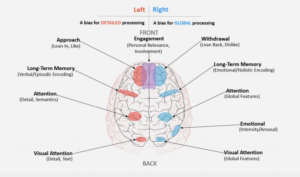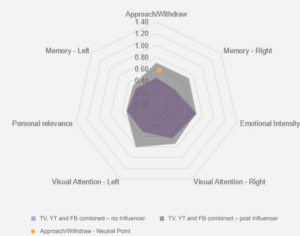
Whalar is proud to unveil its release of the world’s first neuroscience study on influencer – ‘The Science of Influencer’. This study uncovers the true power of influencers by answering the question – why does influencer work?
Included in the report are some startling comparisons of the emotions evoked and memories created by influencer ads as compared with TV, FB and YT ads, and the priming effect of influencer ads on TV, FB and YT ads.
Shazia Ginai, CEO of Neuro-Insight, commented: “At Neuro-Insight we use Steady State Topography to measure real-time responses to content. It’s a unique approach that allows us to generate truly robust, subconscious insights. We are positioned as revolutionary, best in class neuromarketers, so working alongside a really innovative organisation such as Whalar was a natural fit. Influencer is growing incredibly quickly, and Whalar recognised the need to not only understand what is driving this and how it can benefit brands, but also the huge merit in looking beyond conscious responses. We’re thrilled to have partnered with them on such ground breaking work.”

The study found that when compared to TV adverts, influencer is 277% more emotionally intense, and 87% more memorable. When compared to FB adverts, influencer is 64% more emotionally intense, and 182% more memorable. When compared to YT ads, influencer is 28% more emotionally intense, and 73% more memorable.
Moreover, if consumers are exposed to an influencer ad before the TV, FB or YT ad from the same campaign, they are 58% more likely to feel positive towards the TV, FB or TV ad, and 47% more likely to remember it.

These results are a stunning affirmation of the power of influencer marketing, and for Whalar’s approach to creativity in influencer in particular. As research from Nielsen, Binet & Field and Unruly has consistently proven, emotions evoked and memory created by advertising are key drivers of sales. For Whalar’s influencers to perform so much more strongly than TV, FB and YT on these key metrics is startling.
Ian Forrester, SVP, Research and Analytics at Whalar, said: “Furthermore, the priming effect of influencer on TV, FB and YT is huge. Without first being primed by influencer, responses to TV, FB and YT ads were generally negative, and after being primed by influencer they were positive. This is a massive shift, indicative that influencer should play a pivotal role in campaign strategy and media mix.”
Source: Whalar

You must be logged in to post a comment Login